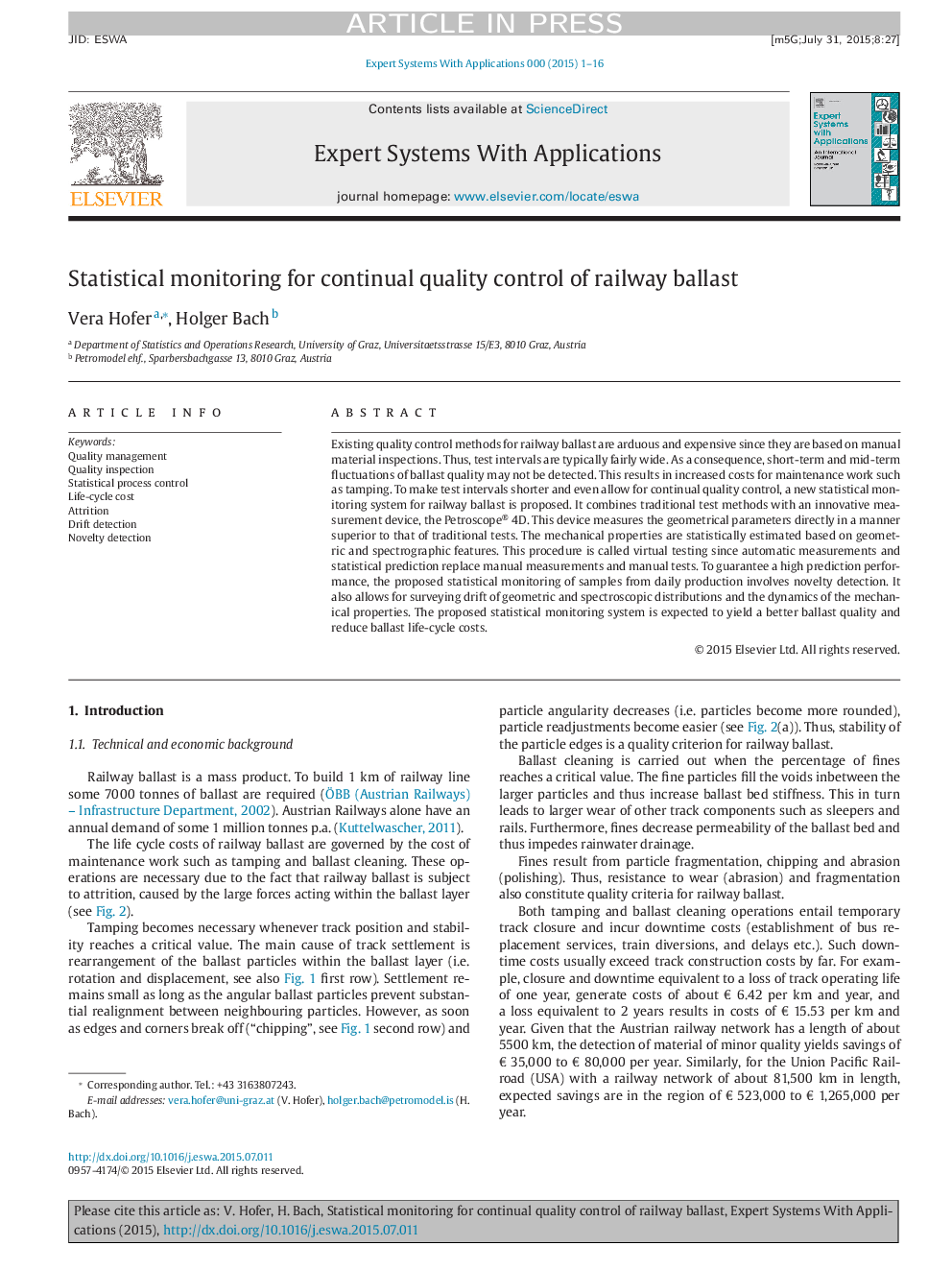| Article ID | Journal | Published Year | Pages | File Type |
|---|---|---|---|---|
| 10321772 | Expert Systems with Applications | 2015 | 16 Pages |
Abstract
Existing quality control methods for railway ballast are arduous and expensive since they are based on manual material inspections. Thus, test intervals are typically fairly wide. As a consequence, short-term and mid-term fluctuations of ballast quality may not be detected. This results in increased costs for maintenance work such as tamping. To make test intervals shorter and even allow for continual quality control, a new statistical monitoring system for railway ballast is proposed. It combines traditional test methods with an innovative measurement device, the Petroscope® 4D. This device measures the geometrical parameters directly in a manner superior to that of traditional tests. The mechanical properties are statistically estimated based on geometric and spectrographic features. This procedure is called virtual testing since automatic measurements and statistical prediction replace manual measurements and manual tests. To guarantee a high prediction performance, the proposed statistical monitoring of samples from daily production involves novelty detection. It also allows for surveying drift of geometric and spectroscopic distributions and the dynamics of the mechanical properties. The proposed statistical monitoring system is expected to yield a better ballast quality and reduce ballast life-cycle costs.
Keywords
Related Topics
Physical Sciences and Engineering
Computer Science
Artificial Intelligence
Authors
Vera Hofer, Holger Bach,
